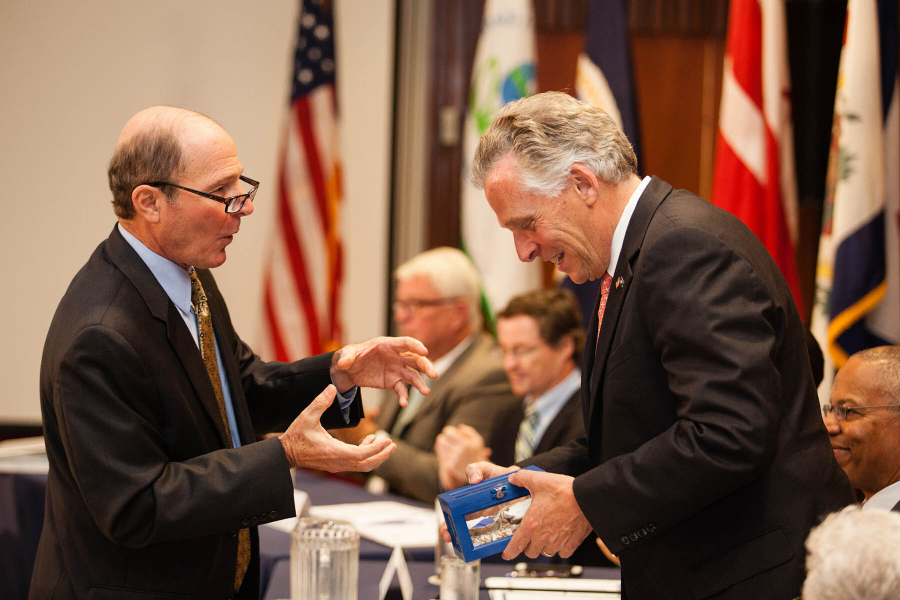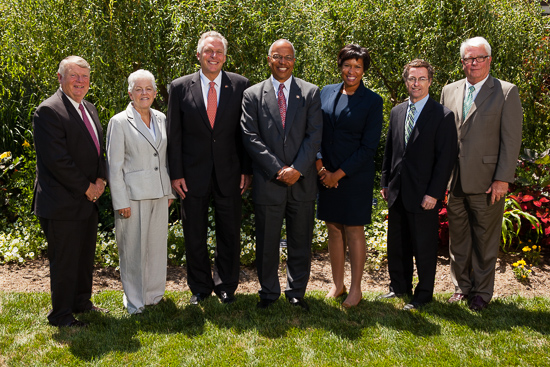Chesapeake Executive Council releases plans to restore and protect Bay watershed
Strategies will guide efforts to meet the goals of Watershed Agreement

Today, the Chesapeake Executive Council announced the release of twenty-five management strategies outlining the Chesapeake Bay Program’s plans to meet the goals of the Chesapeake Bay Watershed Agreement, advancing the restoration, conservation and protection of the Bay, its tributaries and the lands that surround them.
Members of the Executive Council—which represents the seven watershed jurisdictions, a tri-state legislative commission and federal agencies—met to review the state of the Bay Program and finalize the strategies at their annual meeting, held at the National Arboretum in Washington, D.C.
In addition to announcing the strategies, the Executive Council passed two resolutions—first, endorsing the recommendations of the State Riparian Forest Buffer Task Force and committing to collaborative efforts that will increase the miles of forests on agricultural lands, and second, that the Bay Program hold a symposium on financing environmental restoration efforts. Members also agreed to two joint letters, one supporting programs to keep livestock out of streams and another supporting funding in the President’s 2016 budget for the Land and Water Conservation Fund (LWCF), which includes more than $33 million for the Rivers of the Chesapeake collaborative proposal.
“Our partnership to restore the Bay continues to move forward,” said Virginia Governor Terry McAuliffe, Executive Council Chair, in a release. “We recognize the significant challenges we face and look forward to meeting them head on to ensure the restoration of our ecologic and economic treasure, the Chesapeake Bay.”

Each management strategy addresses one or more of the Watershed Agreement’s thirty-one measurable, time-bound outcomes that will help create a healthy watershed. They will reduce nutrient and sediment pollution; ensure our waters are free of the effects of toxic contaminants; sustain blue crabs, oysters and forage fish; restore wetlands, underwater grass beds and other habitats; conserve farmland and forests; foster engaged and diverse citizen stewards through increased public access and education; and increase the climate resiliency of the watershed’s resources, habitats and human communities.

Considerable public input was sought and received which had a substantial impact on the content of the management strategies, representing a collaborative effort between Bay Program partners, academic institutions, local governments, non-governmental organizations, businesses and citizens. Stakeholders throughout the region participated in the development of the strategies and submitted hundreds of comments during the public review period. In the continued work toward accomplishing the goals of the Watershed Agreement, Bay Program partners are currently drafting two-year work plans that summarize the specific commitments, short-term actions and resources required for success.
Prior to this year’s annual meeting, Governor McAuliffe met to discuss recommendations from the local government, citizen and scientific communities with the council’s three advisory committees—the Citizens Advisory Committee, the Local Government Advisory Committee and the Science and Technical Advisory Committee.
Learn more about the Chesapeake Bay Watershed Agreement or the 2015 Executive Council Meeting.

Comments
There are no comments.
Thank you!
Your comment has been received. Before it can be published, the comment will be reviewed by our team to ensure it adheres with our rules of engagement.
Back to recent stories